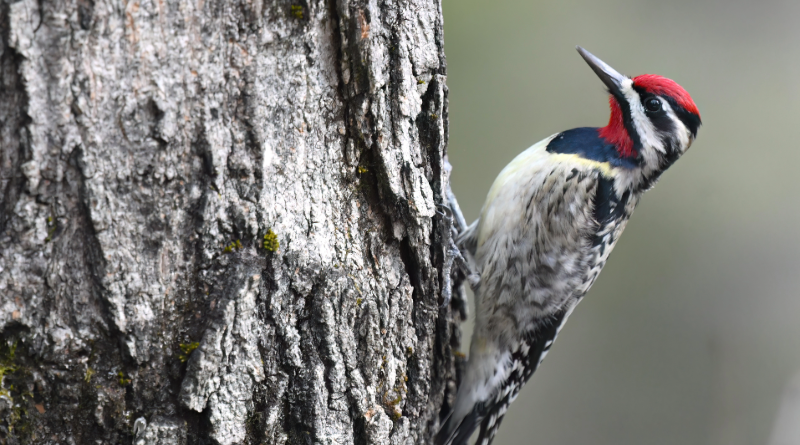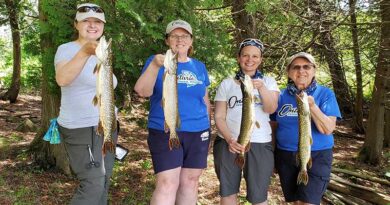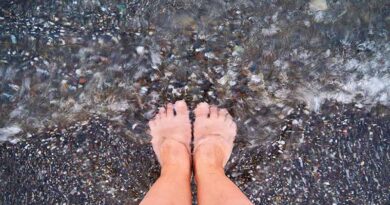Whodunit? Release Your Inner Detective
I have been asked to do the impossible during my work as a trail guide: guarantee a wildlife sighting. Beyond the zoo, there are no guarantees. However, what I can guarantee is evidence of wildlife. The instinct to survive, to eat, to not be eaten and to reproduce usually leave behind bits of evidence posing interesting wildlife mysteries to solve.
In the fall, look for mounds of conifer cone scales accumulating on elevated locations like mossy stumps close to coniferous trees. These piles, called middens, are the compost piles of a red squirrel restaurant. Like all prey species, these chatty rodents are wary and naturally pick elevated locations to eat, preferring to dine with a view! The red squirrel covets the tiny conifer seed, a small nugget of protein and other nutrients at the base of each cone scale.
During the bare bones of our winter forests, messy, spherical clusters of leaves in the forest canopy stand out. Not to be mistaken for stick nests of raptors or ravens, these are squirrel nests called dreys. Tree cavities are squirrels’ preferred winter dens with dreys being Plan B if there are no premium cavity sites available. They use these dreys as warm resting and sleeping sites during the cold winter months.
Built on a foundation of small branches and using dried leaves as insulation, dreys have cozy interior cavities lined with soft materials like moss, thistle seed fluff, dried grass, and fur. One or two squirrels will curl up like nestled earmuffs, using their bushy tails as a duvet to keep them warm. All they need is mood lighting; but I digress.
Keep an eye out along the trailside for shrub and sapling branches with tips that look ragged and torn. This is deer browse. The configuration of the deer jaw and teeth will explain why their browse appears this way. The upper jaw palate of deer has no teeth at the front, only molars at the back. The lower jaw has both molars and incisors. Gripping the branch between the flat upper jaw palate and the incisors of the lower jaw, the deer abruptly twists its head. The branch tip is effectively torn away leaving a ragged looking end. In contrast, rodents and lagomorphs (rabbits and hares) leave a clean 45 degree cut when browsing, resulting from a set of sharp incisors on both the top and bottom jaw.
If you see neat rows of small holes typically in hemlocks and birches, these are made by the yellow-bellied sapsucker. This robin-sized black and white woodpecker has a bush-tipped tongue which helps lap up the sweet sap and any insects caught in the sap. The shallow small holes are drilled just deep enough to tap into the cambium layer under the protective tree bark. Called sap wells, they have been linked to the early spring arrival of the ruby-throated hummingbird as they depend on this sweet food source before flower nectar becomes available later in the spring.
Patterns of 3 or 4 small round marks are commonly found imprinted into the smooth, grey bark of the American beech tree. These are black bear claw marks. Etched into the bark while climbing, black bears seek beech nuts before they drop to the ground in the fall. A bristly husk protects the 3-sided nut which is comprised of 20% protein and 50% fat! This pre-hibernation fattening food is now in short supply for bears and other wildlife as beech bark disease continues to kill many of the beech trees in Ontario.
These are black bear claw marks. Etched into the bark while climbing, black bears seek beech nuts before they drop to the ground in the fall. A bristly husk protects the 3-sided nut which is comprised of 20% protein and 50% fat! This pre-hibernation fattening food is now in short supply for bears and other wildlife as beech bark disease continues to kill many of the beech trees in Ontario.
Sometimes our forest walks will leave us disappointed with the lack of wildlife sightings. Generally, wildlife is wary of people and our presence is detected well before we arrive because we are noisy creatures with a strong odour. However, pay close attention on your forest hikes and you may spot evidence of wildlife activity. Like a game of Clue, you can test your nature detective skills by solving the mystery of “whodunit?”
Submitted by Rick Whitteker. You can find Rick at home in the forest, as a seasoned trail guide, nature writer and passionate wildlife enthusiast in the Haliburton Highlands.




